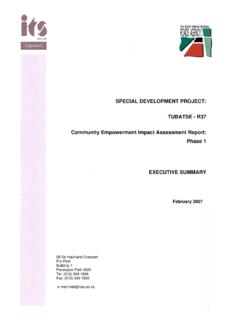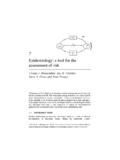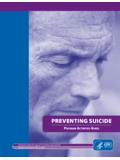Transcription of Becoming a Better Reviewer (and Writer and …
1 2013 Becoming a Better Reviewer (and Writer and researcher , too) characteristics of excellent Reviews excellent reviews Discloses any potential conflicts of interest. Explains the Reviewer s view of his or her intended role or expertise, topic expert, methodologist, practitioner. Is respectful. Offers specific constructive comments. Is appropriate in length. Helps editors with the decision on acceptance. Comments on how the report fits in the state of current knowledge on the topic. Comments on the importance, impact or action related to the study.
2 Comments on the appropriateness of the paper for this journal. Offers rationales for Reviewer recommendations. Supports comments with references, when possible. Makes helpful suggestions on the general organization, format and display of data. Points out areas that are unclear in text, tables or figures. Includes three sections of comments: 1. Comments to the author, organized in two parts: A. General overview of the paper and what it contributes to current knowledge B. Specific comments and recommendations (by section, page and paragraph) 2.
3 Confidential comments to the editor, including recommendation about acceptance and revision. Disappointing Reviews Makes disrespectful comments. Makes criticisms without offering constructive suggestions. Makes recommendations without offering any rationale. Is way too short or way too long Dives into copy editing detail. Demonstrates bias or a specific agenda. Does not offer any opinion on acceptance or revision. 2013 EXEMPLAR REVIEW I appreciate the opportunity to review this interesting report on the relationship between brief patient-reported measures and the presence of specific diagnoses.
4 I enjoyed reading the manuscript. I commend the authors for a number of strengths of their work, including: 1. The use of such brief patient-reported measures could be used clinically in busy primary care practices. 2. The large sample drawn from a large number of primary care clinics, strengthening the diversity of the sample. 3. The examination of the relationship patient reported well-being to health outcomes among a population in which they have not previously been extensively studied. 4. The use of appropriately sophisticated sampling and data analysis approaches.
5 These are all important strengths of the study. Considering these strengths, though, as I read the manuscript I found some areas in which I would have appreciated greater clarity. I believe the paper could be further strengthened by added information about: 1. The methods used. After reading the methods section, I found myself wondering about some of the details of the methods used. By locating and reading the earlier publication on this work referenced in the manuscript, some of the questions I had were answered. However, I think it is unlikely that most readers would take the time to search out the companion publication.
6 Without doing so, the validity of the approach taken may be questioned. I suggest expanding the description of the methods in this paper ( , exclusion criteria, how mental/physical morbidity were operationalized in the second set of regression models, etc.). In addition, I had some concerns about the level of significance chosen. Because this was exploratory research, a wide variety of associations were tested. As a result, a correction for multiple comparisons should be made, lowering the significance level criterion, and eliminating some of the associations reported as significant.
7 2. The conceptual model. As exploratory research, I recognize the intent was to search for any associations that could be identified. However, in the absence of an overall conceptual model that could provide an overview of anticipated relationships, the associations that do appear do not seem to have a coherence that presents face validity. For example, what is the biological or psychological rationale why moderate levels of well-being would be associated with specific chronic conditions while a low levels of well-being are not?
8 While it appears this particular example would be addressed by correcting for multiple comparisons, the need for an overall conceptual model that explains the pattern of associations and non-associations remains. The current approach of explaining each identified association through individual mechanisms did not convince me of the external validity of the findings. 2013 A conceptual model may also be able to address a question of confounding in the results. For instance, chronic pain and mood are known clinically to have a strong association.
9 Could the reported associations be confounded by the association between these two outcomes? 3. The external validity of the sample. It would be helpful for the authors to elaborate on the diagnostic categorizations of the sample. Some of the prevalence rates appear markedly different than what would be expected in primary care in the Some discussion of the external validity of the sample is important, because these categories are the main outcomes. Misclassification bias from self-reporting is a major threat to the findings.
10 4. The study design and operationalization of concepts. The use of simple, brief patient-reported measures is an advantage, as noted previously. However, it also risks oversimplification of complex concepts. There is a rich scientific literature about each of these concepts, their definition, their operationalization, and their association with various health outcomes. The authors touch upon this in their discussion , but further discussion and justification for their choice of measures would be helpful. 5. How can this information enhance delivery of primary care beyond what is currently available; how should the clinician use this information.







